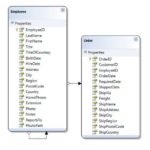Archives for LINQ .Net
Introduction to LINQ and Its Applications
In today's digital era, data is the new oil. Processing, querying, and manipulating data quickly and efficiently is vital for businesses and developers alike. With the advent of Language Integrated…
LINQ join Clause -Left Outer Join
Using LINQ’s join clause, you can also perform a left outer join. Like an inner join, a left outer join also returns a flat result. An inner join omits any item that…
Creating an XML Document Using LINQ to XML
If you played with the XML Document Object Model classes to create XML documents from scratch, it will be easy for you to migrate to a brand new set of …
LINQ to XML
The .NET Framework provided us with several techniques for accessing and manipulating an XML file. In the past, you can use the XmlReader or the different XML Document Object Model classes such…
Modifying Database with LINQ to SQL
Mapping the database tables and its records to their corresponding LINQ to SQL classes makes it even easier to manipulate databases. Once LINQ to SQL classes is generated, you can…
Querying a Database with LINQ to SQL
We will be creating a Windows Forms Application that allows as to you to query and view records from a particular table using LINQ to SQL classes, SQL Server 2008,…
LINQ to SQL
LINQ to SQL is a powerful tool which allows developers to access databases as objects in C#. With LINQ to SQL, you are able to use LINQ query operators and methods…
LINQ Aggregate Methods
LINQ has aggregate operators or methods that allows you to perform mathematical calculations based on the values of all the elements in a collection. We will learn here the different aggregate operators…
LINQ Examples
Now that you have learnt some basic LINQ querying including how to select, filter, and order results of a query, let’s take a look at more examples combining the concepts…
Joining Data Sources
There are times where you want to combine values from different data sources into just one result. Of course, those data sources must be related in some way. In LINQ,…



